„Tuff-LIFE“: A habitat of water and lime
A project by the EU for the preservation and the improvement of springs defined by calcareous tufa and upper reaches of streams
Started in September 2018, the three main topics of this nature-conversating project are spring areas with a significant incidence of moss, wild streams in the forest and the role of the forest itself. The project is based in the counties of Paderborn and Höxter, North Rhine-Westphalia, Germany, the area of the forestry department Hochstift. A various number of measures dedicated to the protection and the improvement of selected forestal and aquatic habitats in different project areas are planned.
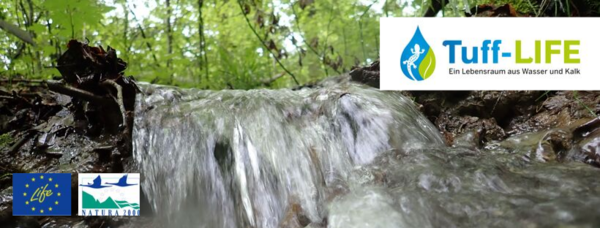
The pan-European nucleus of the project’s main focus, the legally protected petrifying springs with tufa formation, is located in Germany. In addition to regions in Bavaria and Baden-Württemberg, this infrequent type of biotope exists in North Rhine-Westphalia, too.
The Hochstift area is home to 80% of the springs found in North Rhine-Westphalia. Due to its rarity, this type of spring ranks among the European-wide natural heritage.
A further key issue of the project is the protection and promotion of alder-, ash- and softwood mead forests as well as ravine and slope forests. These kinds of woods are severely impaired by ash dieback, a fungal disease of the common ash tree. Sighted in NRW for the first time in 2006, the ash dieback has spread rapidly since.
The project "Tuff-LIFE" (LIFE17 NAT/DE/000497) is a project promoted by the European Union and the Ministerium für Umwelt, Landwirtschaft, Natur- und Verbraucherschutz des Landes Nordrhein-Westfalen (MULNV). The nature-conservating project is executed by the Landesbetrieb Wald und Holz Nordrhein-Westfalen (the federal land’s public enterprise responsible for forestry and timber) in the authority area of the regional forestry department Hochstift, hence the counties of Höxter and Paderborn. Commenced in September of 2018, various measures for the preservation and amelioration of biotopes related to calcareous tufa springs and upper reaches of streams will be conducted until mid-2023.
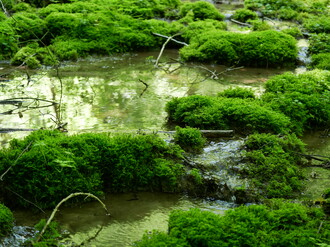
The highly sensitive habitat “calcareous tufa spring” frequently appears on small areas. Depending on the volume of water, watercourses develop, whereas springs with a rather small amount of water often resemble “sloughs”.
The presence of calcareous rock in the soil enables the formation of this particular type of spring. When reaching the surface of the ground, the soil water induces numerous procedures for the typical lime precipitation with deposition of moss, stones and branches. These processes do not only become visible by the light brown lime coat, but also the calc-tufa and limestone terraces, typical indicators for these spring areas, form and develop. The terms “calc-tufa” and “limestone” merely differ in the process of the lime precipitation.
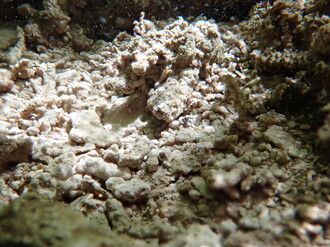
All those formations developing under the participation of plants occurring in spring areas are considered as calc-tufa. Algae and moss, as well as the characteristic hook moss, play a capital role in the formation of calc-tufa by using carbon dioxide during photosynthesis. Lime depositing on moss kills off the plant by shading it. The steady regeneration of the moss and new lime deposits eventually lead to the formation of the unique poriferous shape of the spring.
The remains of died-off plants and animals may reinforce this process.
As opposed to the formation of calc-tufa, sinter forms because of chemical and physical processes. Conditional upon changes in the temperature and pressure of the water reaching the ground’s surface, the lime precipitates. The sediments ultimately form rock with no hollows or gaps.
In the southern part of East Westphalia, hence the responsibility area of the forestry department Hochstift, four selected project areas extends over the counties of Paderborn and Höxter. With a wooden area of 6.137 hectares, these territories are included into the pan-European nature reserve system Natura 2000.
The project area „Leiberger Wald“ (DE-4517-303), located between the northern border of the Sauerland and the southern high plateau of Paderborn, is the largest of all project areas. Dominated by deciduous forests, the territory excels at its medium mature up to old-aged beech stands as well as numerous springs and smaller running waters. Due to geological conditions, the project territory exhibits various springs tending to the formation of calc-tufa and limestone because of the presence of calcareous water, particularly in the northern part. Partially, there are alder-ash forests and alluvial softwood forests to be found alongside these running waters.
In between the villages of Dalheim, Blankenrode and Holtheim which belong to the town of Lichtenau, the Flora-Fauna-Habitat Directive area „Marschallshagen und Nonnenholz“ (DE-4419-304) stretches across two rather large forest complexes. Deep notches in the ground,narrow streams and a few springs predominate this forest terrain located in the east. In the western part of the FFH Directive area the stream „Piepenbach“ that is hemmed by alder-ash forests and alluvial softwood forests in some sections runs.
The FFH-area „Wälder zwischen Iburg und Aschenhütte“ („Forests between Iburg and Aschenhütte“, DE-4129-303) features a high percentage primarily in old beech stands. Owing to the calcareous soil, the area is pervaded by scores of calcareous springs and streams with occurrence of calc-tufa and limestone.
As it is located in between the forestal territories of the Weser Mountains and the Egge Hills, the FFH-area „Wälder um Beverungen“ (DE-4322-304) fulfills a special function as a connection between these territories. A large number of characteristic and endangered species of plants and animals find accomodation in the numerous forest ecosystems and habitats. Besides three significant springs and streams vigorously shaped by lime, slope forests have established in the deep gashes.
Service
Do you have any questions, hints or suggestions regarding the project or do you need further information? We are pleased to help you via e-mail or telephone.
Since the habitats „petrifying springs with tufa formation“, „alder-ash tree and softwood forest“ as well as „slope and hillside mixed forests“ are important and unique components of the regional woods, they are in the focus of the project. The improvement of the state of conservation of these aquatic and forestal habitats is the project objective.
1. Conservation and development of three selected habitat types
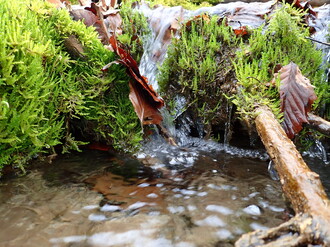
Being sensitive biotopes, calc-tufa springs quickly react to exterior influence. The conservation status has lately been described as unfavourable for the majority of springs in the project area. This is based on numerous factors and impairments:
concrete enclosures
old drainage channels
erosions
foot traffic caused by animals
eutrophication by the input of fertiliser such as nitrogen and phosphor impair the formation of the characteristic flora and fauna, thus the formation of calcareous tufa.
The so-called upper reaches evolve in places where several streams converge. That habitat as well as the springs are in many places cut by the existing path network.
The alder-ash tree and softwood alluvial forests as well as slope and hilllside mixed forests are protected as a priority, yet their composition of tree species is endangered due to the breakdown of the characteristic species common ash tree as a consequence of the dieback of ash sprouts. An infestation of the fungus Hymenoscyphus fraxineus, immigrated from Asia and responsible for the disease, becomes initially visible at single withered leaves sagging from the sprouts and eventually kills off the entire tree. Witnessed for the first time in North Rhine-Westphalia in 2006, the disease has now taken over almost every ash population in the state.
2. Protection and amelioration of the living conditions of the flora and fauna socialized with the objective biotopes
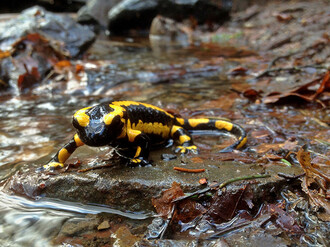
Habitats and their specific species of plants and animals are connected (socialized) closely. If the biotopes are preserved, protected sustainably or strengthened in their dispersal, the positive effects also bear on the flora and fauna. Food supply, hideouts and other abiotic factors faciliate the settlement of a habitat. Therefore the fire salamander, hook moss and the dragonfly have adjusted their development to predominating conditions in the springs and streams.
3. Acquirement and competence at handling the ash dieback
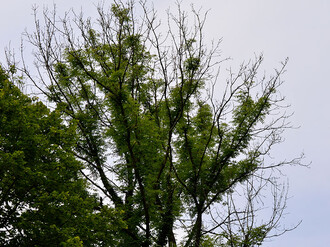
Conditioned by the dieback of ash sprouts, the wood discolours and the trees die off. Not only is this an economical deficiency yet also an ecological disadvantage since the ash tree has a high forestal significance. Its deep and broadly branched system of roots has stabilizing characteristics and diminishes the danger of erosions at hills, embankments and brooksides.
The current knowledge about how to deal with the dieback of ash sprouts is strongly limited. The course of disease, the diffusion, the abatement of the fungal infestation and the protection of the tree species are issues which still need to be properly researched. Recommended actions are mostly based on the removal of obviously infested ash trees and the quest of resistant individual trees.
In order to improve the state of preservation and to sustainably protect the petrifying springs with tufa formation and the forestal habitats predominated by ash trees, several nature conservation measures are planned for the period between July of 2019 and March of 2023. On the long run, the animals and plants inhabiting the biotope will benefit from these measures, too.
1. Improvement of the hydrological balance
Years ago, spring areas with an adequate volume of water (swell) were used for supplying single farms and houses with water, hence the springs were framed with concrete. Another measure conducted was the abandonment of some runnels alongside spring areas for an easier cultivation of the forest. A removal of the enclosures and a reactivation of old, defective or impaired runnels, as planned in the project, will enable the springs to adapt to a rather natural course. Roads in the forest act as a barrier for water habitats and shall thus be replaced by fords and broader underbridges with a high exposure to light. By these means, the runnels and streams are given the opportunity to develop naturally and the diffusion of biodiversity is promoted. Preventing a eutrophication due to the proximity to agriculturally cultivated areas, two hectares of land are going to be purchased.
2. Deficient habitats and forest ponds for biodiversity
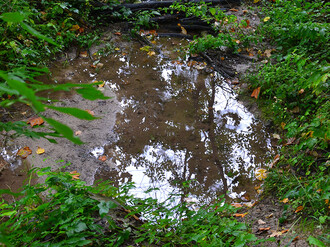
Many animal species are dependent on aquatic habitats during their development: dragonflies, fire salamanders and alpine newts spend the beginning of their lives in water. In order to increase biodiversity, numerous, partially temporary, small or tiny waterbodies, scours and shallow areas in runnels as well as forest ponds are going to be constructed during the project. They will serve as
spawning waters for toads and newts
habitats for several aquatic species, for example amphipods, caddis-fly and stonefly larvae
spots of food supply for black storks and dippers
3. Adaptation of forestal habitats
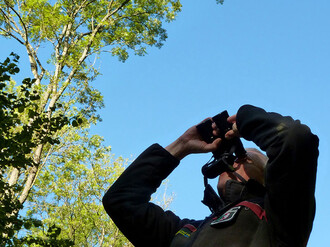
Due to high reparations during and after World War II in conjunction with reforestation, fast-growing spruces were planted in many places in order to cover the vast forest clearings. However, spruces are affected by storms, attract forest pest and moreover lead to a strong acidification because of their coniferous litter which is hard to decompose. Additionally, the shading has a negative impact on the diversity of species inhabing the waters. Brushes typical of the habitat such as red alder and witch elm can help to counteract these impairments and shall therefore replace the spruces over the course of the project.
Contradictory to the strong shading, an excessive incidence of light may be unfavourable for the waters, too: modifications of water’s temperature and its chemicals effect the species living in the water and the formation of limestone. Particularly in areas with ash dieback and hence a stronger incidence of light, those issues occur. Those responsible of the project intend to plant resistant ash trees and other tree species with similar site requirements for the prevention of the problems related to light incidence. In areas with less noticeable ramifications of the disease, the ashes‘ vitality is going to be promoted by specific forest management.
An annual monitoring of the ashes‘ development in selected areas shall bring further knowledge about ash dieback. There are research projects about ash dieback on a national and an international level. A connection of these projects is planned.
4. Public relations work
By passing on information about nature conservation and especially the protection of springs and waters in the forest, the public will be sensitised to these topics. Excursions through the project areas, lectures, seminars and flyers, brochures and information boards will help to teach and inform the public about the special features and the required protection of the habitats and their range of species.

